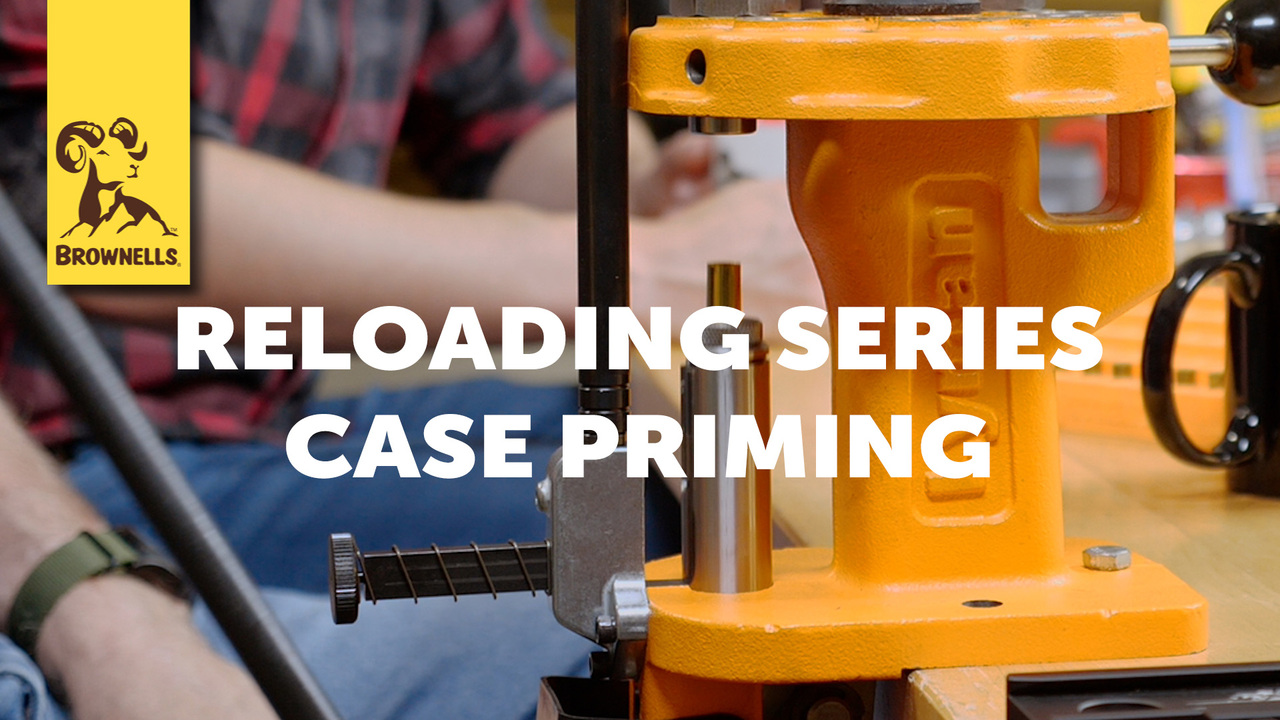Reloading Series: Case Priming
Introduction
Hey everyone, Caleb and Steve here from Brownells! In this installment of our reloading series, we’re focusing on an essential step—seating primers. If you're reloading your own ammo, proper primer seating is key to ensuring your rounds fire reliably. Today, we’ll walk through two different methods for seating primers, one using a hand priming tool and another with the Lyman turret press. Whether you’re a beginner or just need a refresher, we’ve got you covered. Let’s dive in!
Overview of Priming Methods
There are several ways to seat primers into your cases, and each method has its pros and cons. Today, we’re demonstrating two common methods: a hand priming tool and the priming tool on a Lyman turret press. Each of these tools is easy to use and allows you to seat primers accurately without too much fuss. So let’s start with how to set them up and get going.
Hand Priming Tool (Frankford Arsenal) Setup
First up is the hand priming tool. We’re using the Frankford Arsenal hand priming tool, which is both affordable and effective. Caleb mentions that this tool is his personal favorite because it gives you a good feel for how well the primer seats in the case. There are two main types of primers: large and small primers, and we’ll be working with small pistol primers today since we’re loading for 9mm. If you’re ever unsure which size primer to use, a quick look at your reloading manual will tell you everything you need to know. The setup for the Frankford Arsenal priming tool is simple. You attach the appropriate shell holder to fit your case, pour the primers into the tray, and shake the tray to make sure the primers are facing the right way up, with the Anvil up. Once the primers are loaded into the tool, you’re ready to start seating them into your cases.
Lyman Turret Press Priming System
Now, over to the Lyman turret press setup. Many reloading presses come with built-in priming systems, and the Lyman press has a clever one. Steve shows us how the turret press can perform two operations in one cycle: sizing the case on the upstroke and seating the primer on the downstroke. Steve also walks through how to load the primers into the press using a primer tube. The process is simple: you use the primer pickup tube to collect the primers, insert the tube into the press, and load the primers into the priming system. A protective primer shield ensures that if anything goes wrong, you’re safe. Once the primer is set, the press seats the primer as you lower the handle.
Primer Seating Tips and Depth Checks
When seating primers, it’s important to ensure that they’re seated at the correct depth. A properly seated primer should sit just below the surface of the case. Caleb demonstrates how to check for proper seating by running a finger or fingernail across the primer to make sure it’s flush with the base of the case. If a primer is sticking out, it can cause malfunctions—especially in a revolver, where even a slightly raised primer can stop the cylinder from rotating. Caleb and Steve recommend using a flat surface to test for wobbly cases, which is an easy way to check if a primer is not seated correctly.
Troubleshooting and Ensuring Proper Primer Seating
Steve shares a story about a revolver malfunction caused by a primer that wasn’t seated flush. Even being 5 thousandths of an inch high can cause issues, especially with revolvers where cylinder rotation is critical. He explains that sometimes a hard primer or new brass can make seating a bit more difficult, so it’s important to check each case carefully as you go. For those just starting out, Steve reminds us to be patient. It’s easy to apply too much pressure when using a press, which can result in crushed primers. With the hand priming tool, you have better control and can feel the primer as it seats, which reduces the likelihood of damaging the primer.
Hand Priming Tool Demonstration
Now it’s time to demonstrate the Frankford Arsenal hand priming tool in action. Caleb sets up a case and shows how easy it is to seat a primer by squeezing the tool. The tool gives you a nice, tactile feel when the primer seats properly, allowing for precise control over the process. Steve jumps in and shows an alternative method for using the hand priming tool, holding it in a way that points the tool away from your body while operating it. This method allows for better safety, especially when seating primers, which could potentially be dangerous if handled improperly.
Using the Priming Tool in Different Ways
As Steve explains, some people prefer to hold the hand priming tool differently. He demonstrates holding the tool in a way that points it away from your body while priming. This method can feel more comfortable and adds an extra layer of safety, especially if you’re concerned about primer detonation. Caleb shows how to seat another primer using this method, squeezing the tool carefully and checking the primer for proper seating.











